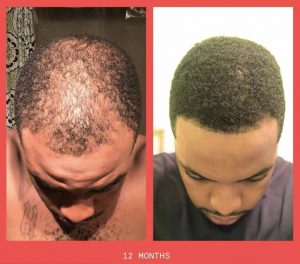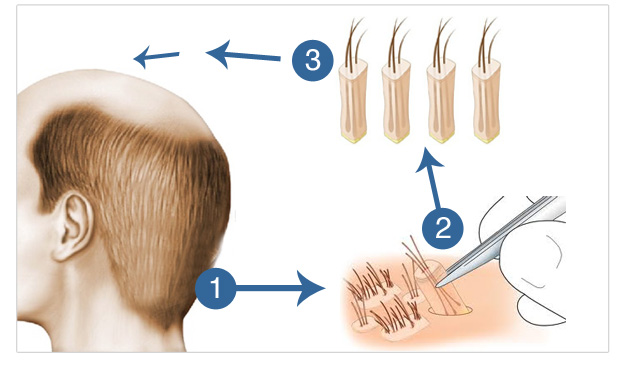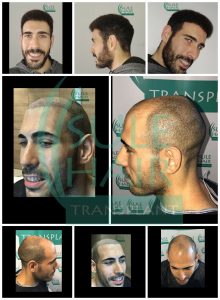Going all the way back to the story of Samson and Delilah, men have been sensitive about their hair. Some, like Sir Patrick Stewart and “His Royal Airness” Michael Jordan can rock their baldness with flair.
But for many, baldness can be a source of embarrassment, so it’s no surprise that hair transplants have become a booming industry over the past couple of decades.
Of course, big business for hair replacement doctors can mean bigger costs for you – but does it have to be that way?
in this article we will try answer the question, will hair transplants ever get cheaper?

Hair Transplant 101
The cost of your hair transplant will depend in part on what type you get. There are two major types of hair transplants, FUT and FUE.
The former stands for follicular unit transplantation.
You may also see it referred to as “strip surgery.”
The basic idea involves removing a tiny bit of skin, dividing and implanting follicle units, and then implanting them back into your scalp to grow like seeds.
The latter stands for follicular unit excision or extraction.
This involves the even more complicated procedure of removing skin from your scalp and implanting follicles.
FUE is newer than FUT, and both have their pros and cons.
While FUT is often cheaper, a bigger determinant is how many follicles you want to have implanted.
As you would expect, the more hair you need to have implanted, the greater the cost.
This video animation explains the difference between FUT and FUE hair transplant techniques
Why Are Hair Transplants So Expensive?
There are many reasons for this, not the least of which being that of supply and demand.
There are countless men looking to regain hair on their heads and only so many surgeons qualified to perform the procedure, thus allowing these doctors to charge more.
As indicated above, both FUT and FUE are also complex procedures (you don’t want “taking the skin off your scalp” to be done recklessly, after all), which adds to the time it takes the surgeons to complete the procedure, thus adding to the cost.
Where you get your hair transplant can also have a big impact on the overall price.
Turkey is often cited as one of the cheapest places to have this type of procedure performed, with quotes often ranging from a few hundred to a few thousand dollars.
Real Cost of Hair Transplants in Turkey in 2020
Europe is a bit more expensive, and the exchange rate of euros to dollars favors the euro. As such, if you’re paying in dollars, you’ll have to pay more for the procedure in Europe, whereas in Turkey the exchange rate favors the dollar.
You’re looking at a range of at least $1500 to $3000 for many Turkish procedures, compared with 2000€ to 3800€ for clinics in EU countries like Greece and Portugal.
In Canada, the cost is about $2000 to over $12000, while in the United States you’re much more likely to have to pay five figures, with an average of around $16000.
That price breakdown demonstrates why searches for Turkish hair transplants are so common and shows that the procedure still costs thousands of dollars no matter where you go.

Will hair transplants Get Cheaper in the Future?
There are two opposing theories.
Theory 1
While better tech often makes things cheaper eventually, hair transplant procedures will probably not become cheaper in the near future, for two main reasons.
First, what really drives up the cost won’t change – surgeon expertise and the hair grafts themselves.
Surgeons often charge based on how many grafts you want to have. Their expertise, the demand, and the staggered price for grafts isn’t likely to change anytime soon.
What’s more, even leaving unforeseen developments (e.g. pandemics), hair transplants are typically seen as cosmetic and not “necessary.”
As a result, your health insurance almost certainly won’t cover hair transplants, meaning you’ll have to pay those four- or five-figure sums yourself.

Theory 2
On the other hand, it could be argued that with greater automation the procedure will become easier and more efficient. That should make it cheaper.
With globalisation and travelling becoming easier, people are prepared to travel to where they can find cost-effective hair transplants. They are no longer a hostage to the usual places of Europe and North america.
Clients now travel from North america and Australia to Turkey for a hair transplant!
This should force a price war and hopefully a reduction in overall cost.
Lowering the Price of your hair transplant
Choosing the right place to undergo the procedure and a low amount of grafts are the two biggest ways to lower the cost of a hair transplant.
The latter is hard since of course, you want as full a head of hair as possible. Still, if you just need “a little” more hair, paying for fewer grafts can lower the cost significantly.
Turkish clinics are often cheaper than US, UK, Canadian, and EU ones, although quality can vary, so make sure that wherever you receive the transplant, it’s at a clinic that’s accredited, transparent, and completely trustworthy.
With this information, you can determine the best and most cost-effective way to regain a full head of hair.

Pharmacist with special interest in hair loss and hair transplantation.
Read my book on hair transplants in Turkey on Amazon:
https://track.more-info.co.uk/amazon/authorprofile


















